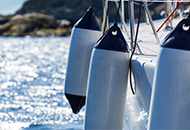
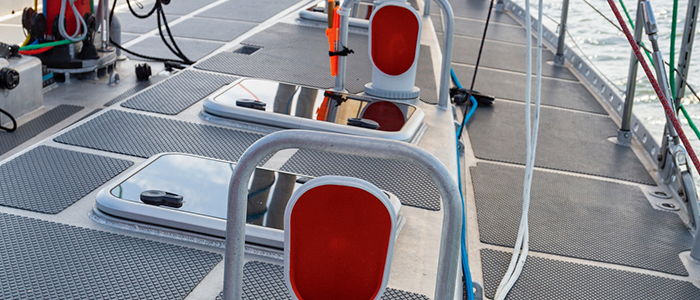
The Importance of Fresh Air Circulation
Ensuring a continuous flow of fresh air on a boat is not just a matter of comfort—it's a critical aspect of maintaining a healthy and safe environment onboard. The significance of fresh air circulation encompasses several key benefits, emphasizing the need for a well-designed ventilation system.
Health Benefits and Well-being
Fresh air is a fundamental component for respiratory health, especially in the confined spaces of a boat. Proper ventilation systems work tirelessly to eliminate airborne pollutants, allergens, and unpleasant odors. This relentless circulation of air can help mitigate the risk of respiratory problems, allergies, and general discomfort among passengers and crew, fostering an atmosphere where well-being is a priority.
Carbon Dioxide Management
Humans naturally exhale carbon dioxide (CO2), and in the enclosed environment of a boat, CO2 levels can quickly escalate, leading to potential health risks. Elevated CO2 concentrations are known to cause drowsiness, headaches, and impair cognitive functions, compromising the safety and efficiency of those onboard. A robust ventilation system ensures that CO2 levels are kept in check, replacing stale air with fresh, oxygen-rich air from outside.
Moisture Control
The marine environment inherently exposes boats to high humidity levels, which can escalate within enclosed spaces, leading to condensation. This moisture not only promotes the growth of mold and mildew but can also cause significant damage to the boat's interior, including corrosion, wood rot, and deterioration of onboard electronics. Effective ventilation plays a crucial role in moisture management, safeguarding the boat's integrity and the health of its occupants.
Enhancing Comfort and Relaxation
Adequate ventilation significantly contributes to the overall comfort onboard by regulating temperature and reducing the stuffiness of the air. It allows passengers and crew to enjoy their journey with a sense of freshness and relaxation, making the boating experience more enjoyable.
In conclusion, the circulation of fresh air onboard is vital for several reasons: it safeguards the health of passengers and crew, maintains the structural integrity of the boat, and enhances the overall comfort and enjoyment of the maritime journey. Ensuring that your boat is equipped with an efficient and well-maintained ventilation system is an investment in safety, longevity, and pleasure.
Additionally, proper ventilation is crucial for preventing the buildup of gasoline fumes, which can be hazardous. Boats built with both natural ventilation systems and powered ventilation systems ensure that air intake is continuous and effective. Powered ventilation, which often includes cowl vents, helps to forcibly expel fumes and draw in fresh air, significantly reducing the risk of fume accumulation and enhancing overall safety onboard.
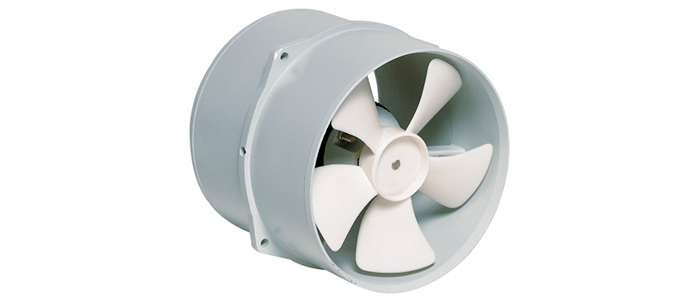
Enhancing Air Quality on Board
Elevating air quality onboard is not merely about allowing a refreshing breeze to sweep through; it encompasses a series of deliberate measures designed to ensure the health, safety, and comfort of everyone aboard.
Maximizing Health Benefits
Air quality directly influences the well-being of passengers and crew. A ventilation system that efficiently expels stale air and circulates fresh, oxygen-rich air can significantly reduce the incidence of respiratory conditions. By minimizing exposure to pollutants and allergens, the system helps prevent discomfort and health risks, ensuring a more pleasant journey for all.
Leveraging Natural Ventilation
One of the most effective strategies to enhance onboard air quality is through natural ventilation. This involves harnessing wind and air currents to facilitate the exchange of indoor and outdoor air without relying heavily on mechanical systems. Strategic placement of vents, windows, and hatches can promote cross-ventilation, effectively cooling the interior and reducing energy consumption. Moreover, natural ventilation contributes to the dilution of indoor pollutants, further enhancing air quality.
Committing to Regular Maintenance
The cornerstone of effective ventilation is regular maintenance. Keeping filters clean and ensuring that ducts are free from obstructions are fundamental tasks that guarantee the system operates at peak efficiency. Maintenance checks also extend to inspecting for leaks or damages in the system and ensuring that fans or motors are adequately lubricated for optimal performance. Such diligence not only maintains air quality but also extends the lifespan of the ventilation equipment.
The Role of Mechanical Ventilation
In situations where natural ventilation is insufficient, mechanical Boat Fans come into play. These systems, equipped with fans and blowers, actively circulate air throughout the boat. Mechanical ventilation is particularly beneficial in regulating air quality in below-deck areas, where natural airflow might be limited. By integrating advanced features like air filters and humidity controls, mechanical systems can significantly improve air quality, making them an essential component of any comprehensive ventilation strategy.
In essence, enhancing air quality onboard is a multifaceted endeavor that involves leveraging both natural and mechanical ventilation solutions. By prioritizing regular maintenance and making informed choices about ventilation equipment, boat owners can ensure that the air their passengers breathe is as fresh and invigorating as the marine environment surrounding them.
Understanding the ventilation system requirements for boats is crucial, especially for those powered by gasoline engines. The primary purpose of a ventilation system is to remove fumes from the bilge and prevent the accumulation of flammable gases, thereby avoiding a life-threatening explosion or fire. Boats, used primarily with gasoline engines are required by law to have a ventilation system in place. This system typically consists of two ventilation ducts: an intake duct that scoops up fresh air from outside the boat and an exhaust duct that removes fumes.
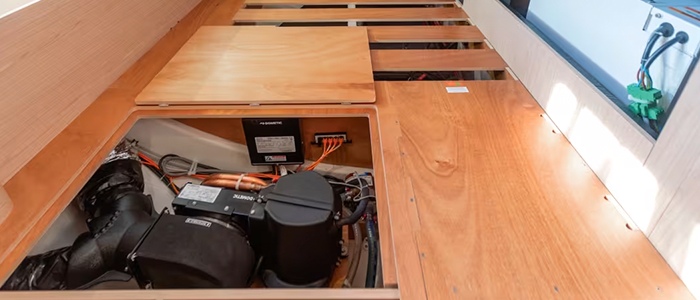
Preventing Structural Damage
A boat's ventilation system is essential not just for maintaining air quality but also for preventing structural damage that can be costly and dangerous. Proper ventilation plays a pivotal role in preserving the vessel's integrity by managing humidity levels and reducing moisture accumulation.
1. Combatting Condensation
Condensation is a common issue on boats, resulting from the difference in temperature between the air inside the boat and the water outside. Without adequate ventilation, condensation can settle on walls, ceilings, and other surfaces, leading to corrosion, wood rot, and deterioration of boat materials. A functional ventilation system ensures a steady flow of air, reducing temperature variations and thereby minimizing condensation.
2. Protecting Against Mold and Mildew
High humidity levels provide the perfect breeding ground for mold and mildew, which not only pose health risks but can also cause significant damage to the boat's interior, including upholstery, carpets, and wooden structures. By effectively managing moisture levels, a ventilation system helps prevent the growth of mold and mildew, safeguarding the boat's internal components and ensuring a healthier environment onboard.
3. Enhancing Material Longevity
Moisture can be detrimental to various materials used in boat construction, such as wood, metal, and fiberglass. Prolonged exposure to damp conditions can lead to rust, corrosion, and weakening of these materials. By maintaining a dry and well-ventilated environment, the structural integrity of these materials is preserved, thereby extending the life of the boat and reducing the need for expensive repairs or replacements.
4. Ensuring Safety in Storage Areas
Storage compartments and bilges are particularly susceptible to water accumulation and humidity. Without proper ventilation, these areas can become damp and musty, potentially damaging stored items and compromising the boat's structural integrity. By including these areas in the ventilation plan, it's possible to keep them dry and protect the boat from the inside out.
5. Safeguarding Electrical Systems
Moisture and electrical systems are a dangerous combination. Condensation and high humidity can lead to short circuits, corrosion of electrical components, and ultimately, system failures. By integrating ventilation solutions that specifically target areas housing electrical systems, boat owners can mitigate these risks and ensure the reliable operation of onboard electronics.
The importance of a boat's ventilation system extends far beyond comfort and air quality; it's crucial for preventing structural damage that can compromise the vessel's safety and longevity. By strategically implementing and maintaining an effective ventilation system, boat owners can protect their investment and enjoy a safer, more durable boat.
Reducing the Risk of Carbon Monoxide Build-up
Carbon monoxide (CO) build-up in boats poses a silent yet deadly threat, especially in poorly ventilated spaces. CO, a colorless, odorless gas produced by burning carbon-based fuels, can lead to serious health issues, or even fatalities, if not properly managed. A well-designed boat ventilation system plays a critical role in mitigating this risk by ensuring the continuous flow of fresh air, which dilutes and expels harmful gases.
1. Understanding the Source
Carbon monoxide is produced by engines, generators, cooking appliances, and any other device that burns fuel. In a confined boat environment, without adequate ventilation, CO levels can quickly rise to dangerous levels. Effective ventilation systems are designed to combat this by providing a direct path for CO to be safely expelled from the living and operational areas of the boat.
2. Ventilation as a Preventative Measure
Active ventilation, particularly in engine compartments and other areas where fuel is combusted, is crucial. Systems equipped with blowers can forcefully remove CO and other exhaust gases, preventing them from seeping into cabins and communal areas. Passive vents, strategically placed, also contribute by allowing natural airflow to carry away CO build-up.
3. Design Considerations for Optimal Safety
When designing or modifying a boat’s ventilation system, special attention should be paid to areas prone to CO accumulation. Vent placements should ensure a thorough exchange of air, even when the boat is stationary. Consideration should also be given to the different scenarios under which CO build-up might occur, such as when idling or running at low speeds, to ensure the ventilation system is effective under all conditions.
4. The Role of CO Detectors
In conjunction with a good ventilation system, CO detectors add an extra layer of safety. Installed in sleeping areas, cabins, and near potential sources of CO, these detectors can alert occupants to the presence of CO long before it reaches dangerous levels, providing an essential safeguard against CO poisoning.
5. Education and Awareness
Awareness of the risks associated with CO and the importance of ventilation is vital. Boat owners, operators, and passengers should be educated about the sources of CO, the symptoms of CO poisoning, and the steps to take if exposure is suspected. This knowledge, combined with a well-maintained ventilation system, significantly reduces the risk of CO-related incidents.
6. Regular Maintenance and Inspection
Routine checks of the ventilation system, fuel-burning appliances, and engine operations help ensure that everything functions as intended. Regular maintenance prevents blockages in vents and exhausts that could lead to CO build-up, ensuring the boat's ventilation system remains effective at all times.
Reducing the risk of carbon monoxide build-up is a critical concern for boat safety. A well-designed and maintained boat ventilation system is essential in preventing CO accumulation, safeguarding the health and safety of everyone on board.
For boats powered by gasoline, ventilation systems are required by law to enhance fire safety. These systems must include powered blowers and ducts fitted with cowls to ensure proper air circulation. The ventilation system consists of air intake ducts that scoop up fresh air and force it into the bilge and engine compartments. By extending from the open atmosphere to the lower point midway to the bilge, these systems effectively remove hazardous fumes, maintaining safe humidity levels inside and outside the boat. Ensuring fresh air is circulated helps prevent fires or explosions, contributing to the overall safety of the vessel.
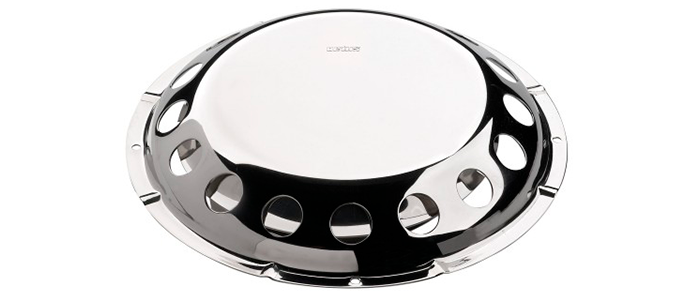
Choosing the Right Boat Ventilation System
Selecting an appropriate boat ventilation system is pivotal for maintaining a safe, comfortable, and healthy environment onboard. This choice influences not only air quality but also impacts the structural integrity of the boat and the wellbeing of its occupants.
1. Assessing Boat Specifications and Needs
- Size and Configuration of the Boat: The size, design, and internal layout of your boat play a significant role in determining the type and capacity of the ventilation system required. Larger vessels with more enclosed spaces might need a more complex system than smaller, open boats.
- Usage Patterns: How and where you use your boat influences your ventilation needs. Boats frequently used in hot, humid climates or for extended periods may require more robust systems to manage air quality and moisture effectively.
2. Types of Ventilation Systems
- Natural Ventilation: This cost-effective and energy-efficient option relies on wind and boat motion to circulate air. While beneficial for smaller boats or those used in cooler climates, it might not suffice for larger vessels or in regions with extreme weather conditions.
- Mechanical Ventilation: For larger boats or those used in hot, humid environments, mechanical systems that include fans and blowers offer controlled and consistent air circulation, regardless of external conditions.
- Hybrid Systems: Combining natural and mechanical elements, hybrid systems offer flexibility and efficiency, adapting to various weather conditions and usage scenarios.
3. Energy Consumption and Efficiency
Consider the energy requirements of the system, especially if opting for a mechanical or hybrid system. Efficient models that use less power can maintain air quality without significantly impacting your boat’s energy reserves.
4. Noise Levels
Particularly for mechanical systems, evaluate the noise generated by fans and blowers. Systems designed to operate quietly ensure comfort and do not disturb the peace onboard, especially during rest periods.
5. Ease of Maintenance
A user-friendly system that is easy to clean and maintain will serve you better in the long run. Regular maintenance is crucial to keep the system effective and extend its service life.
6. Installation and Integration
Consider how the system will integrate with your boat's current layout and whether it requires professional installation. The right system should fit seamlessly without requiring extensive modifications.
7. Safety Features
Advanced ventilation systems come with safety features such as automatic shut-off in case of fire or integration with carbon monoxide detectors. These features add an extra layer of protection for you and your vessel.
8. Customization and Flexibility
Opt for a system that offers adjustable settings or modes to cater to different conditions, such as varying temperature and humidity levels. This adaptability ensures optimal comfort and air quality under diverse circumstances.
9. Budget and Cost-effectiveness
While the initial cost is an important consideration, also evaluate the long-term value of the system in terms of energy consumption, maintenance requirements, and durability.
Choosing the right boat ventilation system requires careful consideration of your boat’s specific needs, the conditions under which you’ll be operating, and the balance between comfort, safety, and efficiency.
What is the Purpose of a Boat's Ventilation System - Conclusion
The purpose of a boat's ventilation system is to ensure the safety and efficiency of the vessel by removing hazardous gasoline fumes and maintaining air quality inside and outside the boat. For boats powered by gasoline, ventilation systems are required by law and must consist of two ventilator ducts: an intake duct that scoops up fresh air from the open atmosphere and an exhaust duct fitted with one or more exhaust blowers. These systems must run for at least four minutes before starting the engine to ensure gasoline fumes have been removed from the engine and fuel compartments, thereby preventing a potential fire or explosion.


